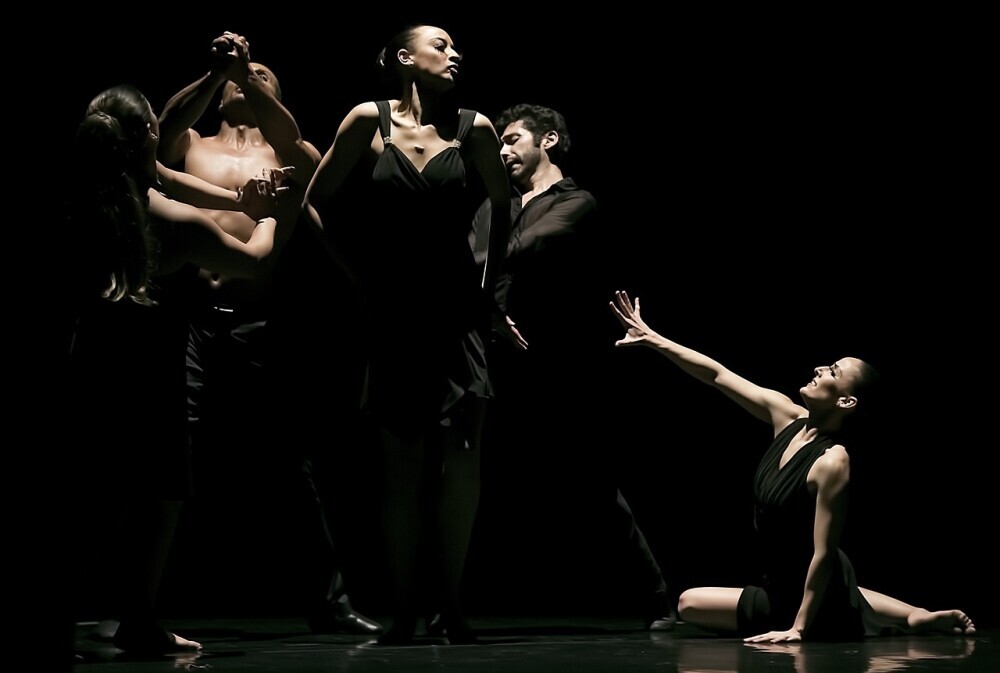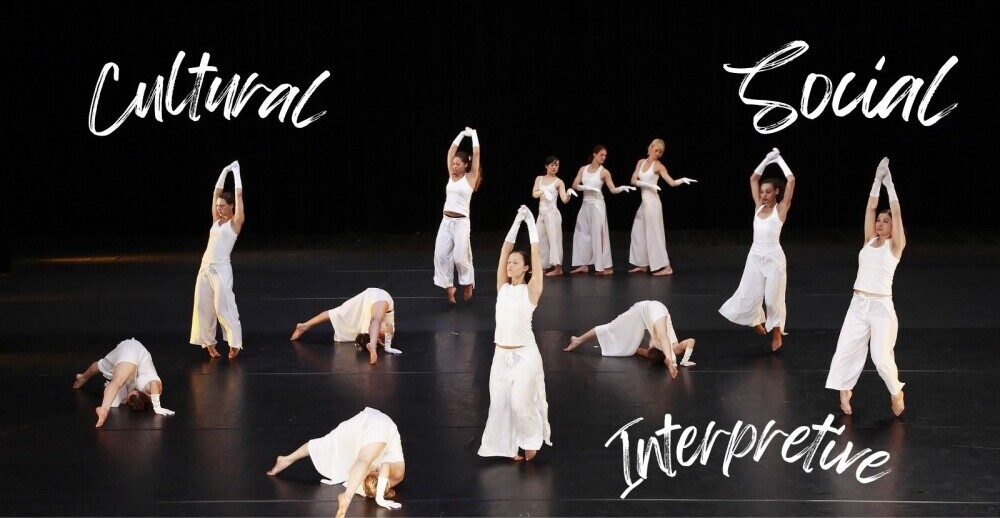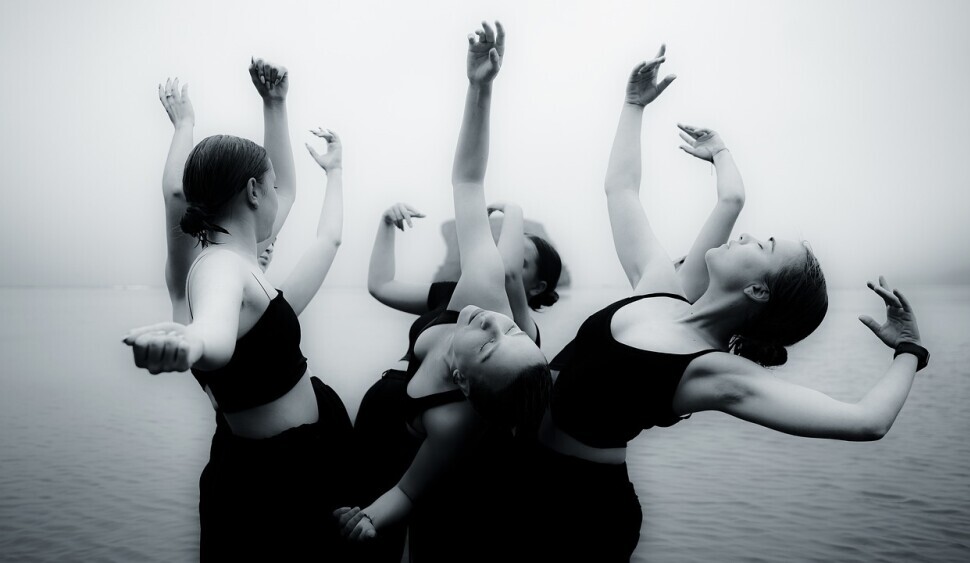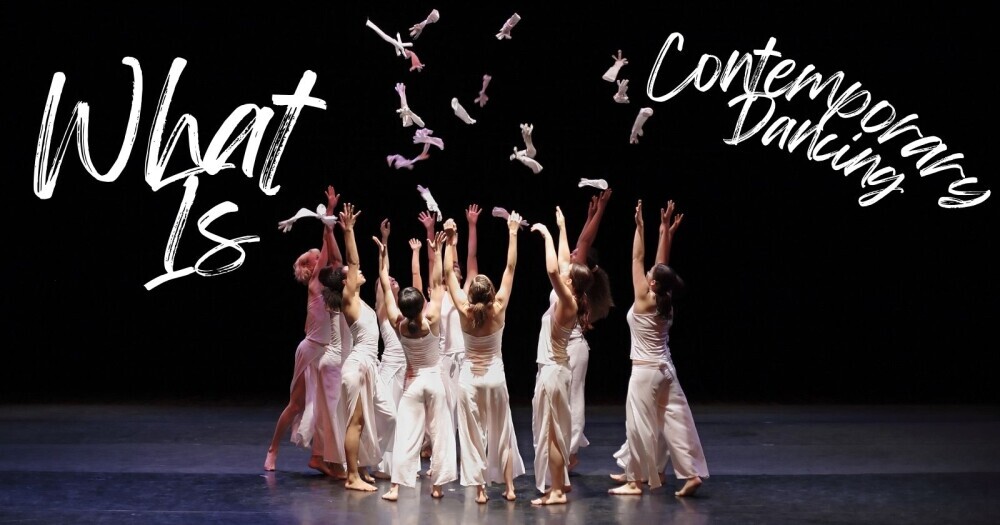So what is contemporary dancing and how did it come about? Let’s explore this misunderstood dance form a little more.
Contemporary dance is a genre that’s tricky to define but thrilling to experience. It breaks the mold set by classical ballet and even modern dance, blending a variety of styles and techniques.
You’ll see elements from ballet, jazz, hip-hop, and even traditional dances from around the world. The core of contemporary dance lies in its fluidity, expressiveness, and versatility.
The reason it’s called ‘contemporary’ is that it’s always evolving. Unlike classical ballet, which sticks to set techniques and routines, contemporary dance thrives on innovation. It’s a reflection of the current times, essentially making it a ‘dance of today.’
What makes contemporary dance different from other genres?
It’s less about strict form and more about exploration. While ballet dancers chase perfect lines and jazz dancers emphasize rhythmic patterns, contemporary dancers prioritize expression and storytelling. The movement can be smooth or chaotic, constrained or free-flowing, making every performance unique.
What Is Contemporary Dancing
Contemporary dance might feel like a fresh explosion of creativity, but its roots go way back to the early 20th century. It emerged as a rebellion against the rigid structures of classical ballet and the melodramatic flair of early modern dance.
The dance world was ripe for change, and pioneers like Isadora Duncan and Martha Graham were leading the charge.
Isadora Duncan is often credited as one of the first to break away from ballet’s confines. She brought in spontaneous, natural movements, drawing inspiration from nature and ancient Greek art. Her performances were a radical shift from the tutus and pointe shoes dominating that era.
Following Duncan’s trailblazing steps, Martha Graham pushed the envelope even further. She developed a new language of movement that emphasized emotional intensity and human experience. Her technique, characterized by ‘contraction and release,’ remains a foundational element in contemporary dance training today.
Other figures, like Merce Cunningham and Lester Horton, introduced distinct styles and techniques that have influenced the genre. Cunningham’s chance procedures and Horton’s eclectic training methods added more layers to this ever-growing dance form. Their work set the stage for the eclectic mix that defines contemporary dance today.
What is Contemporary Dance Today?

Today’s contemporary dance scene is a vibrant, ever-evolving landscape. It reflects the complexity of modern life and embraces a wide range of influences. You’ll find performances that blend street dance with classical ballet, or that incorporate multimedia elements like video projections and interactive technology.
What are the key characteristics of today’s contemporary dance? Expect the unexpected. Dancers might move fluidly one moment and break into sharp, fragmented actions the next. There’s a focus on storytelling, often addressing social issues, personal narratives, or abstract concepts. Improvisation also plays a huge role, adding a layer of spontaneity to performances. Dancers are encouraged to express their individuality, making each piece a unique statement.
Speaking of individuality, some of today’s most influential choreographers are pushing the boundaries of contemporary dance in exciting ways. Names like Crystal Pite, Akram Khan, and Hofesh Shechter are just a few who’ve made significant impacts. These artists experiment with form and content, often creating works that challenge traditional norms and audience expectations.
Then there are the dance companies that bring these visions to life. Groups like Nederlands Dans Theater, Alvin Ailey American Dance Theater, and Batsheva Dance Company continually redefine what contemporary dance can be. They’re known for their innovative productions, which often tour internationally, spreading the reach of this dynamic art form.
In this constantly shifting genre, staying updated with the latest trends and performances can be a thrilling journey. Whether you’re a dancer, choreographer, or simply a fan, there’s always something new to discover in the world of contemporary dance.
Techniques and Training
Contemporary dance requires a solid foundation in various techniques. You’ll often start with the basics of ballet, modern dance, and even a bit of jazz. Each discipline contributes something unique — ballet for control and grace, modern dance for grounded movements, and jazz for its rhythm and style.
Improvisation is a big part of training. Unlike other dance forms where every movement is pre-planned, contemporary dancers spend time exploring their own instinctual movements. This practice helps develop a keen sense of self and a deeper connection to the music. You could be asked to interpret a piece of music or an abstract theme, letting your body guide you through unscripted motions.
There are specialized schools and online platforms where you can learn contemporary dance. Prestigious institutions like Juilliard and London Contemporary Dance School offer rigorous programs for aspiring dancers. For those who prefer learning at their own pace or from the comfort of home, online courses through websites like Steezy or YouTube tutorials can be incredibly helpful.
Consistency in training is key. Regular practice helps to build muscle memory and improve technique. Flexibility, strength, and endurance are also crucial components. Practicing yoga or Pilates can complement your dance training by enhancing these physical attributes.
Finding a local dance studio that offers contemporary classes can also provide a more communal learning experience. Being part of a dance community offers support, inspiration, and valuable feedback. The camaraderie can make training more enjoyable and push you to refine your skills.
What Is Contemporary Dancing Cultural and Social Impacts

Contemporary dancing does more than entertain, as it is a powerful medium for cultural and social expression.
At its core, this dance form is about breaking boundaries and challenging norms. It’s a space where diverse voices and stories can be shared, often spotlighting issues that mainstream media overlooks.
Representation is a huge deal in contemporary dance. Unlike traditional genres that might stick to certain aesthetics or themes, contemporary dance is inclusive and adaptable. You’ll see dancers of all body types, ethnic backgrounds, and experiences. This inclusivity enriches the art form, making it a mirror that reflects the diverse world we live in.
Contemporary dance often tackles social issues head-on. Topics like gender identity, racial injustice, mental health, and political unrest find a voice through dance. This genre’s ability to convey deep, sometimes uncomfortable truths in a visceral, non-verbal way makes it incredibly impactful.
In the media and pop culture, contemporary dance has carved out a significant niche. Shows like ‘So You Think You Can Dance’ and dance sequences in films have brought contemporary dance into mainstream consciousness, attracting a broader audience. These platforms help demystify the genre, making it more accessible and appreciated by people who may not visit dance theatres.
The global stage is another realm where contemporary dance shines. International festivals and competitions showcase works from various cultures, highlighting both unique local flavors and universal themes. This global exchange fosters a sense of unity and shared humanity, bridging cultural gaps through the universal language of movement.
Future of Contemporary Dance

Contemporary dance isn’t just about the present; it also looks towards the future with an ever-evolving horizon. The next wave of this dynamic genre promises to be as groundbreaking as its past, with trends pointing toward even more innovation and inclusivity.
Technology is set to play a significant role. We’re already seeing performances that incorporate virtual reality, motion capture, and interactive elements, pushing the boundaries of what dance can be. Imagine dancers interacting with digital landscapes or audiences participating in the performance through their own devices. This fusion of dance and tech opens up endless possibilities for creativity.
Sustainability is another emerging theme. With growing awareness around environmental issues, contemporary dance companies are finding ways to incorporate eco-friendly practices, whether through sustainable costumes, sets, or travel options. This commitment to the planet mirrors the social consciousness that contemporary dance is known for.
Supporting the future of contemporary dance means supporting its artists. Whether by attending live performances, engaging with online content, or donating to dance companies, every bit helps. Many companies offer behind-the-scenes looks and virtual classes, making it easier than ever to get involved and stay connected.
So now you have a better idea of what is contemporary dancing and what it is all about.
For anyone wanting to dive into this world, there’s no time like the present. Join a class, attend a performance, or simply follow contemporary dance communities on social media to keep up with the latest trends and conversations. The future of contemporary dance is bright, full of potential, and waiting for you to be part of it.


